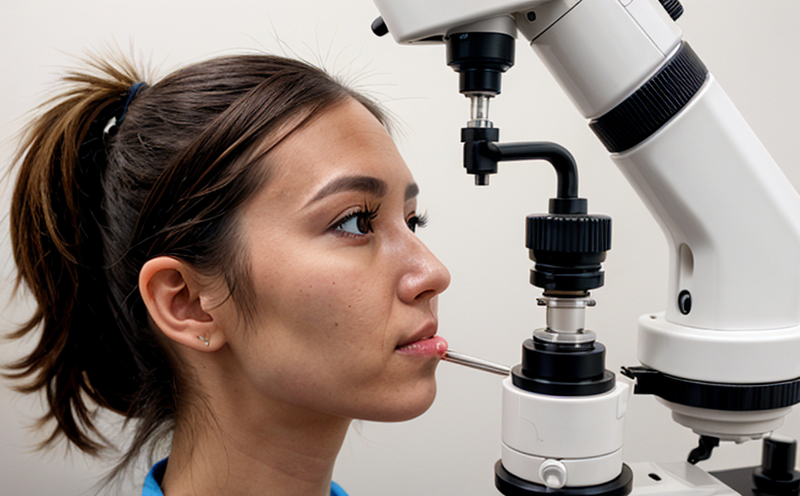ISO 11979-9 Multifocal Intraocular Lens Optical Performance Testing
The ISO 11979 series of standards provides comprehensive guidance on the testing and evaluation of intraocular lenses (IOLs) used in ophthalmic surgery. Specifically, ISO 11979-9 focuses on multifocal IOL optical performance testing, which is crucial for ensuring that these devices meet stringent regulatory requirements and deliver consistent, reliable vision correction.
Multifocal intraocular lenses are designed to correct both near and far vision in patients who have undergone cataract surgery. These lenses incorporate multiple focal points within a single lens, allowing the eye to focus on objects at different distances without relying solely on glasses or contact lenses. The optical performance of these IOLs is critical for patient outcomes and satisfaction.
The testing outlined in ISO 11979-9 involves several key parameters that must be rigorously evaluated to ensure compliance with international standards:
- Wavefront Aberration
- Absolute and Relative Contrast Sensitivity
- Optical Power
- Diopteric Error
- Spherical, Cylindrical, and Axis Errors
- Off-Axis Optical Performance
The testing procedure typically begins with the preparation of the IOL specimen. This involves ensuring that the lens is free from any contaminants or defects that could affect its performance during testing. Once prepared, the specimens are mounted on a precision optical bench designed to hold them in a stable, repeatable position.
The testing process itself uses high-precision instrumentation capable of measuring minute changes in light transmission and refraction. This includes:
- Confocal Scanning Laser Ophthalmoscope (CSLO)
- Ophthalmic Optical Coherence Tomography
- Wavefront Analyzer
- High-Accuracy Diopter Meter
The results of these tests are then used to determine whether the IOL meets the stringent criteria set forth in ISO 11979-9. Compliance with these standards is essential for ensuring that multifocal IOLs deliver consistent and reliable vision correction, thereby enhancing patient outcomes.
Failure to meet these standards can result in suboptimal visual performance and increased risk of complications. Consequently, thorough testing is critical to maintaining the highest standards of quality and safety.
Benefits
The benefits of ISO 11979-9 Multifocal Intraocular Lens Optical Performance Testing extend beyond mere compliance with international standards. It ensures that patients receive the highest quality of care, leading to improved visual outcomes and enhanced patient satisfaction.
- Improved Patient Outcomes: By ensuring optical performance meets stringent criteria, multifocal IOLs provide clear vision at multiple distances, reducing dependency on glasses or contact lenses.
- Enhanced Satisfaction: Patients who experience consistent and reliable vision correction are more likely to be satisfied with their surgical outcomes.
- Regulatory Compliance: Adherence to ISO standards demonstrates a commitment to quality and safety, which is essential for regulatory approval and market access.
- Market Reputation: Consistent compliance with international standards can enhance the reputation of both the manufacturer and the testing laboratory.
In summary, this service ensures that multifocal intraocular lenses are tested rigorously to meet the highest standards of optical performance. This not only benefits the patient but also contributes to the overall market's trust in medical device quality and safety.
Customer Impact and Satisfaction
The impact of ISO 11979-9 Multifocal Intraocular Lens Optical Performance Testing extends directly to customers, particularly patients undergoing cataract surgery. By ensuring that multifocal IOLs meet stringent optical performance criteria, this service enhances the quality of life for individuals who require vision correction.
- Improved Quality of Life: Patients experience clear vision at multiple distances, reducing reliance on glasses or contact lenses and enhancing their ability to perform daily activities.
- Increased Satisfaction: Consistent and reliable vision correction leads to higher patient satisfaction and reduced post-operative complications.
- Enhanced Trust: Compliance with international standards fosters trust between healthcare providers, patients, and regulatory bodies.
For quality managers, compliance officers, and R&D engineers, this service provides a critical tool for ensuring product safety and efficacy. By adhering to ISO 11979-9, these professionals can ensure that their products meet the highest standards of performance and reliability.
Competitive Advantage and Market Impact
The implementation of ISO 11979-9 Multifocal Intraocular Lens Optical Performance Testing offers significant competitive advantages in the medical device industry. By ensuring that multifocal IOLs meet stringent optical performance criteria, manufacturers can differentiate their products from competitors.
- Enhanced Reputation: Compliance with international standards enhances the reputation of both the manufacturer and the testing laboratory, making them more attractive to healthcare providers and patients.
- Increased Market Access: Adherence to these standards can facilitate easier market access in countries that have stringent regulatory requirements.
- Better Patient Outcomes: By ensuring consistent and reliable vision correction, multifocal IOLs contribute to better patient outcomes, which is a key factor for healthcare providers when selecting products.
In the broader context of the market, this service supports overall quality and safety standards, contributing to the advancement of medical device technology. By adhering to ISO 11979-9, manufacturers can contribute to the ongoing improvement of multifocal IOLs, ultimately benefiting both patients and the industry as a whole.





